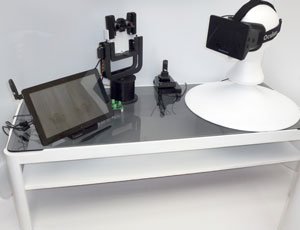Virtual reality headset could enable immersive remote surgery
26 July 2013 | News | By BioSpectrum Bureau

Plextek Consulting is using the Oculus Rift headset to apply what it calls immersive telepresence to remote examinations and diagnostics.
Singapore: A novel headset that completely immerses gamers in a virtual reality has the potential to bring some real-world advances to medical technology. UK-based Plextek Consulting is using the Oculus Rift headset to apply what it calls immersive telepresence to remote examinations and diagnostics.
Immersive telepresence is the concept of a video communications system that simulates complete user immersion within a remote location. Among endless possible use-cases, Plextek Consulting's immersive telepresence concepts could help drive efficiency in the medical industry by allowing healthcare professionals to carry out remote examinations and diagnoses.
Taking it a step further, by allowing users to interact with, as well as see, a remote location it could be possible for users to monitor clinical procedures, check on wards and patients and, with advances in robotics, make it easier and more cost-effective to use medical equipment and perform surgery remotely. In addition, it enables new methods for training clinicians in difficult surgical procedures or to simulate highly complex scenarios that require rapid decision making that can make the difference between life and death.
Simply using a forward facing camera on the Oculus Rift to achieve a fully-immersive virtual reality effect brings difficulties in accurately aligning the real and virtual world whilst maintaining a low latency. Low latency is, of course, a necessity in these applications to avoid nausea as a delay of more than a few tens of milliseconds can significantly degrade the user experience.
Plextek Consulting's innovation is to use a steerable remote camera that tracks the user's head - allowing an interactive and high-quality immersion experience. Both HD video and tracking control are passed wirelessly between the Oculus Rift and remote head, and must achieve the required low latency and high bandwidth that will minimize lag and maximize transmission quality. This allows users to actually be able to look around with the remote camera mimicking the user's head position to maintain a realistic and immersive visual scene.
"Allowing users to look around a remote location pre-empts the reality of them actually interacting with it," commented Mr Graham Tootell, senior technology consultant, Plextek Consulting's Innovation Center. "While the possibilities are endless, this could be a major breakthrough for an industry such as healthcare, where remote examinations can save lives," he said.












